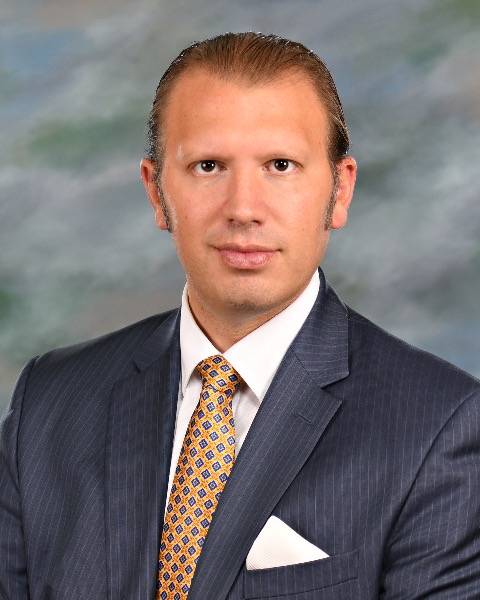Spine
What’s Next: A Hierarchical Order to Surgical Planning for Age-Adjusted Correction of Adult Spinal Deformity
What’s Next: A Hierarchical Order to Surgical Planning for Age-adjusted Correction of Adult Spinal Deformity

Peter G. Passias, MD
Professor
Duke University
Duke University Heath System
New Canaan, CT, US
Presenting Author(s)
Introduction: Research has been concentrated on ASD realignment thresholds for achieving desired clinical outcomes while decreasing complications. However, patients present in differing patterns at unequitable starting points.
Methods: ASD pts with 2Y data. Good Outcome(GO) defined as no proximal junctional failure(PJF), major mechanical complication, or reoperation and meeting Smith et al Best Clinical Outcome(ODI < 15 and SRS-Total>4.5) or SCB in ODI(18.8) by 2Y. Patients stratified into Not Frail and Frail, then ranked and categorized by Low and High PI(pelvic incidence). Hierarchical Approach: for each deformity group, using conditional inference tree(CIT) analysis, thresholds for PI-LL were derived based on meeting GO. Patients meeting PI-LL threshold were isolated, and realignment in each remaining parameter(age-adjusted PT, SVA, T1PA and preoperative UIV inclination angle) was examined to identify which had the greatest effect on meeting GO. ANCOVA and multivariable logistic regression analysis, controlling for age, comorbidities, BL deformity and disability, and surgical factors assessed outcome rates for the hierarchical approach of each deformity group.
Results: 445 ASD pts included. Deformity groups: 29% Not Frail Low PI, 26% Not Frail High PI, 25% Frail Low PI, 21% Frail High PI. Not Frail Low PI less likely developed major mechanical complications(OR:0.1,[0.1-0.9]) and more often achieved GO(OR: 2.6,[1.1-6.3]) with correction of T1PA. Choosing an optimal UIV inclination best aided Not Frail High PI, increasing likelihood of meeting GO(OR: 3.6,[1.3-10.2]). Matching age-adjusted SVA in Frail Low PI after correcting PI-LL led to lower rates of PJF(0% vs 12%,p=.001), reoperation(OR:0.11,[0.01-0.84]) and higher odds of meeting GO(OR:4.0,[1.1-15.6]). Frail High PI was more likely to meet GO(OR:12.7,[3.3-49.1]) when correcting PI-LL and matching age-adjusted PT, with lower rates of PJF (0% vs. 13%,p <.001).
Conclusion : Tailored correction goals for treatment of spinal deformity demonstrated robust clinical improvement while minimizing radiographic and mechanical complications. The analysis of realignment outcomes enables spine surgeons to plan more individualized corrections based on the presentation of adult spinal deformity patients.
Methods: ASD pts with 2Y data. Good Outcome(GO) defined as no proximal junctional failure(PJF), major mechanical complication, or reoperation and meeting Smith et al Best Clinical Outcome(ODI < 15 and SRS-Total>4.5) or SCB in ODI(18.8) by 2Y. Patients stratified into Not Frail and Frail, then ranked and categorized by Low and High PI(pelvic incidence). Hierarchical Approach: for each deformity group, using conditional inference tree(CIT) analysis, thresholds for PI-LL were derived based on meeting GO. Patients meeting PI-LL threshold were isolated, and realignment in each remaining parameter(age-adjusted PT, SVA, T1PA and preoperative UIV inclination angle) was examined to identify which had the greatest effect on meeting GO. ANCOVA and multivariable logistic regression analysis, controlling for age, comorbidities, BL deformity and disability, and surgical factors assessed outcome rates for the hierarchical approach of each deformity group.
Results: 445 ASD pts included. Deformity groups: 29% Not Frail Low PI, 26% Not Frail High PI, 25% Frail Low PI, 21% Frail High PI. Not Frail Low PI less likely developed major mechanical complications(OR:0.1,[0.1-0.9]) and more often achieved GO(OR: 2.6,[1.1-6.3]) with correction of T1PA. Choosing an optimal UIV inclination best aided Not Frail High PI, increasing likelihood of meeting GO(OR: 3.6,[1.3-10.2]). Matching age-adjusted SVA in Frail Low PI after correcting PI-LL led to lower rates of PJF(0% vs 12%,p=.001), reoperation(OR:0.11,[0.01-0.84]) and higher odds of meeting GO(OR:4.0,[1.1-15.6]). Frail High PI was more likely to meet GO(OR:12.7,[3.3-49.1]) when correcting PI-LL and matching age-adjusted PT, with lower rates of PJF (0% vs. 13%,p <.001).
Conclusion : Tailored correction goals for treatment of spinal deformity demonstrated robust clinical improvement while minimizing radiographic and mechanical complications. The analysis of realignment outcomes enables spine surgeons to plan more individualized corrections based on the presentation of adult spinal deformity patients.

.jpg)